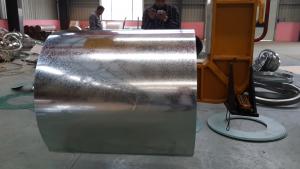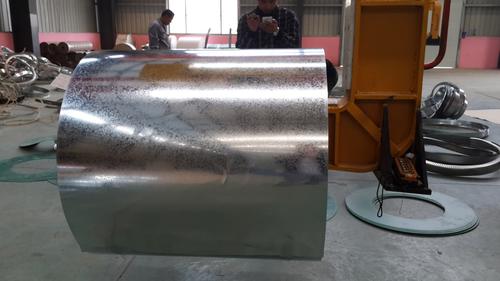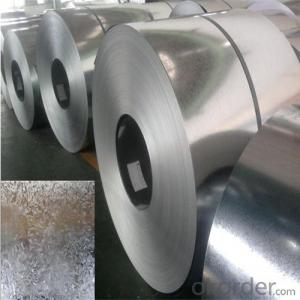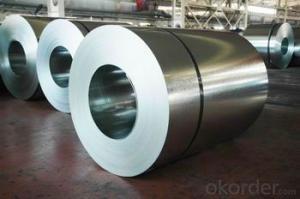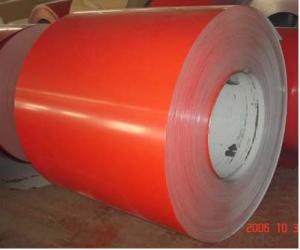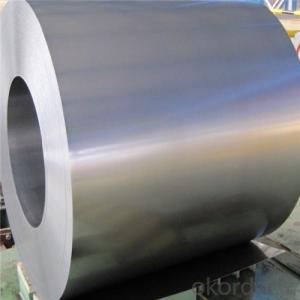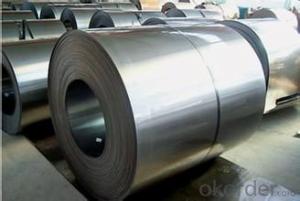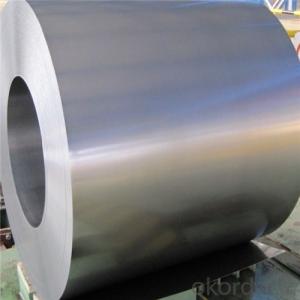Hot-Dip Galvanized Steel Coil-- Good Formability
- Loading Port:
- China main port
- Payment Terms:
- TT OR LC
- Min Order Qty:
- 50 m.t.
- Supply Capability:
- 1000 m.t./month
OKorder Service Pledge
OKorder Financial Service
You Might Also Like
Hot-Dip Galvanized Steel Coil-- Good Formability
Brief Introduction
Hot-Dip galvanized steel coils are available with a pure zinc coating through the hot-dip galvanized process. It offers the economy, strength and formability ofsteel combined with the corrosion resistance of zinc. The hot-dip process isthe process by which steel gets coated in layers of zinc to protect againstrust. It is especially useful for countless outdoor and industrial applications, such as roofing, cladding, decking, tiles, sandwich walls, airconditioning duct as well as electrical appliances and engineering.
MainSpecification
HOT DIP GALVANIZED STEEL | |
THICKNESS | 0.13-0.8MM |
WIDTH | 900-1250MM |
ZINC COATING | 60-275g/m2 |
COIL ID | 508MM OR 610MM |
SURFACE TREATMENT | CHROMATED/UNCHROMATED, OILED/DRY |
COIL WEIGHT | 1-12MT |
The image
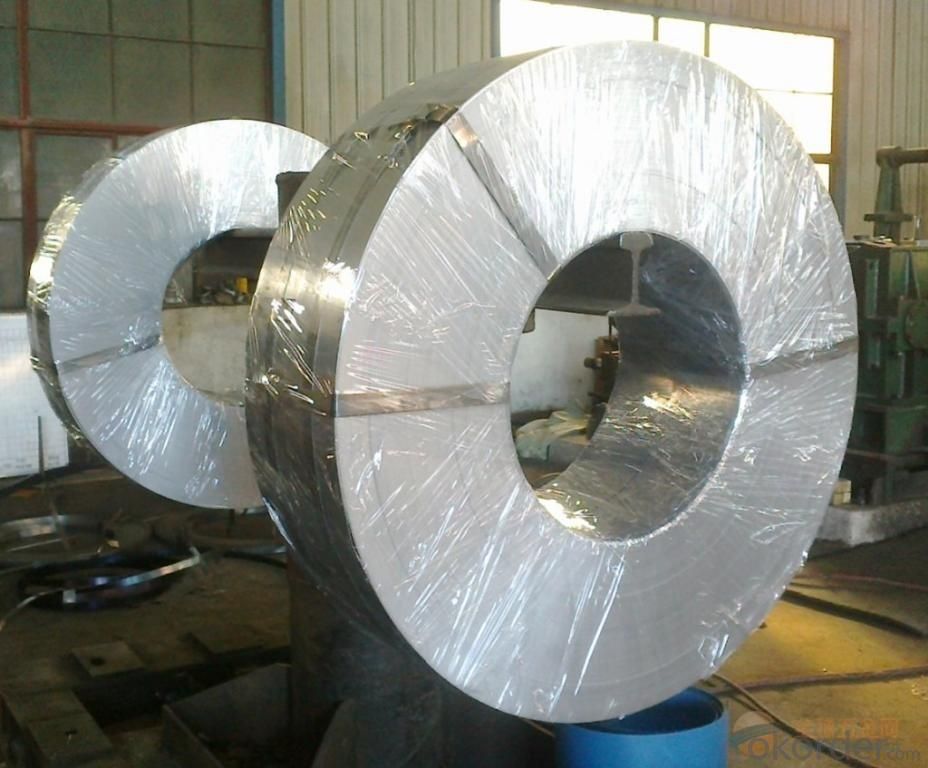
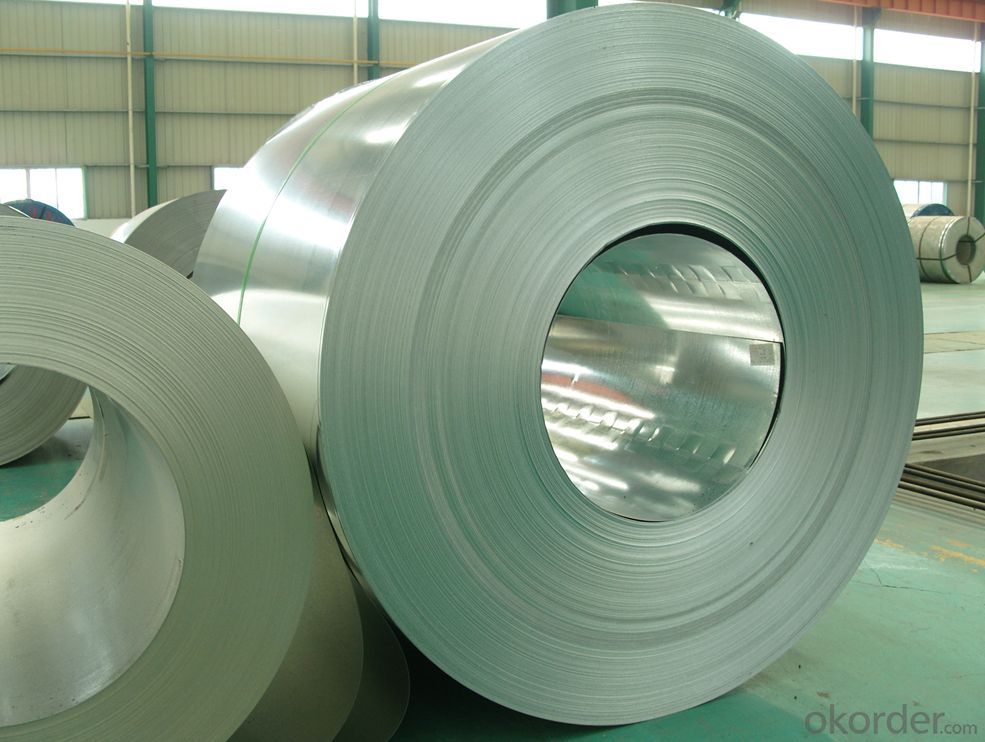
Application
Galvanizedsteel coil/sheet products are mainly used in construction, light industry,automobile, farming and commercial fishing industries.
Whichconstruction industry, mainly used in the manufacture of industrial and civilcorrosion roof, roof grille.
Lightindustry with its manufacture appliance housing, civil chimney, kitchenutensils, automotive industry, mainly for the manufacture of car parts andother corrosion-resistant; husbandry and fishery owners do use food storage,frozen meat and aquatic products processing equipment, etc. Business mainlyused as storage and transportation of materials, packaging equipment, etc.
Package &Delivery
Packagedetails: Standard seaworthy packing for international delivery.
Delivery:According to the exact quantity of your order.
5. FAQ
1.How to guarantee the quality of the products?
We have established the international advanced quality management system,every link from raw material to final product we have strict quality test;We resolutely put an end to unqualified products flowing into the market. At the same time, we will provide necessary follow-up service assurance.
2. How long can we receive the product after purchase?
Usually within thirty working days after receiving buyer’s advance payment or LC. We will arrange the factory manufacturing as soon as possible. The cargo readiness usually takes 15-25 days, but the shipment will depend on the vessel situation.
- Q: What are the typical tolerances for steel coils?
- The typical tolerances for steel coils depend on various factors such as the specific grade of steel, the manufacturing process, and the intended application. However, some common tolerances for steel coils include thickness tolerances of +/- 0.005 to 0.010 inches, width tolerances of +/- 0.020 to 0.050 inches, and length tolerances of +/- 0.125 to 0.250 inches. These tolerances ensure that the steel coils meet the required specifications and can be used efficiently in different industries such as automotive, construction, and manufacturing.
- Q: How are steel coils inspected for mechanical properties?
- Steel coils are inspected for mechanical properties through a series of tests and measurements. These include hardness testing, tensile testing, and elongation testing to determine the steel's strength, ductility, and overall quality. Additionally, non-destructive testing methods like ultrasonic testing and magnetic particle inspection are used to detect any potential defects or flaws in the coils. Overall, a combination of these inspection techniques ensures that steel coils meet the required mechanical properties for their intended applications.
- Q: How are steel coils heat treated?
- Annealing is the method used to heat treat steel coils, resulting in improved mechanical properties and overall performance. To achieve this, the coils are heated to a specific temperature and slowly cooled down. This process relieves internal stresses within the steel and enhances its performance. To begin the heating process, the steel coils are raised to a critical temperature, typically between 800°C and 900°C, depending on the desired outcome. They are then maintained at this temperature for a specific period of time, allowing for the transformation of the steel's microstructure. Once the desired time has passed, the heated coils are carefully cooled down in a controlled manner. This gradual cooling process is crucial as it allows for a uniform and refined microstructure. It also helps prevent the formation of internal stresses that could weaken the steel. The annealing process can be conducted in various atmospheres, such as air, nitrogen, or hydrogen. The choice of atmosphere depends on the specific requirements and properties desired for the steel coils. For example, annealing in a protective atmosphere like nitrogen or hydrogen can prevent oxidation or decarburization of the steel surface. In conclusion, annealing is a crucial step in heat treating steel coils, resulting in improved mechanical properties, enhanced formability, and the desired characteristics for industrial applications.
- Q: i know theres steel in it but what else?
- Nickel, Chrome, others... [edit] To make ASTM A182A F316 (regular forged stainless steel), the required percentages are: 0.08%____Carbon 2.00%____ Manganese 0.045%___ Phosphorus 0.030%___Sulfur 1.00% ___Silicon 10-14%___Nickel 16-18%___Chromium 2-3%_____Molybdenum Heat treat - solution treat and quench Austenitizing/Solutioning Temp (min) - 1900°F Cooling media - liquid Quenching cool below 500°F The addition of chromium is (mostly) what makes it stainless... the other alloying elements provide it with other characteristics - toughness, weldability, temperature resistance, etc...
- Q: I plan to buy a bushcraft knife ..The blade made up by damascus steel.My question is ,is damascus steel is very strong ?
- Pattern welded /damascus is too expensive to use as an everyday knife, as it can cost more than silver. It's best kept as a collection piece. You'd be stupid to keep it in your pocket or use it everyday. that would be a waste of money. Knives you use everyday might be lost or stolen, or they may get rusted, worn, or dirty..... ruining their value. From that point of view the strength or edge-holding ability means very little. Specifically, the bushcraft knife is pattern welded steel. True damascus or Wootz steel is something you'll only find in museums and private collections. they stopped making it several hundred years ago. Despite what many people have claimed, Wootz damascus was inferior to modern tool steels in every respect. It was a brittle, dirty material. It's legendary status has more to do with myth and storytelling. The reason they stopped making was undoubtaby because more modern methods came along that produced a more consistent product, more quickly and easily. Old technologies tend to be abandoned for good reasons. With pattern welded steel, about a dozen strips of two different grades of steel have been stacked, welded together, the twisted and forged to create interesting patterns. This more of an artistic process and doesn't improve the properties of modern steels. Pattern welded steel is for the most part, inferior to a homogenous blade made of a single grade of steel. First of all, PW is a handmade product which means there will be faults and oxide inclusions incorporated into the steel. The welding process is not perfect. Secondly, in the hardening and tempering process you end up with a compromise between the properties of the two different grades of steel. You end up with a product that is not quite as good as either steel would have been individually. The blade may either be too brittle or too soft.
- Q: What is the process for uncoiling and recoiling steel coils?
- The process for uncoiling and recoiling steel coils involves various steps. Firstly, the steel coil is securely placed on a mandrel or a coil car. Next, the coil is unfastened or cut to release the bands holding it together. Then, a suitable uncoiling machine is used to gradually unwind the coil, ensuring it is done in a controlled manner to prevent damage or accidents. Once the desired length of steel is unwound, it can be cut or sheared to the required size. To recoil the steel, it is fed through a recoiling machine that winds it back onto a new core or mandrel. Proper tension is applied during this process to ensure a tightly wound coil. Finally, the recoiled steel coil is secured with bands or straps for transportation or storage purposes.
- Q: What kind of insulation should be used in a steel building?
- Fiberglass batts or spray on foam both work well
- Q: How are steel coils used in the manufacturing of HVAC systems?
- Steel coils are used in the manufacturing of HVAC systems primarily for heat transfer purposes. They are typically used in air conditioning and refrigeration systems to facilitate the transfer of heat between the refrigerant and the surrounding air. The coils, usually made of copper or aluminum tubes with steel fins, are designed to maximize the surface area available for heat exchange, allowing for efficient cooling or heating of the air passing through the system.
- Q: What really is the difference between stain-less steel and iron? I only know that iron is an element, and stain-less steel is an alloy...but what else is there?
- Steel is an alloy composed of mainly iron and carbon. Pure iron is very rarely used anymore. Depend on the concentration of the carbon, you can get from wrought iron to high grade steel. For stainless steel, Chromium is added to the alloy to prevent rusting. Just go to wiki. you should be able to find a lot more about it
- Q: I'm trying to make a corset but I can't find any steel boning in my area. Any clue as to what materials I could buy to to make my own bones, or anything that would work similarly?I know there are places to buy it online, but the cost of shipping makes it barely seem worth it.
- Hi, buy the original bones. They are designed to corset's load. If you use any substitute material it could break and it could be cause of injuries. Use google for link to corset's bones suppliers. Look on:
Send your message to us
Hot-Dip Galvanized Steel Coil-- Good Formability
- Loading Port:
- China main port
- Payment Terms:
- TT OR LC
- Min Order Qty:
- 50 m.t.
- Supply Capability:
- 1000 m.t./month
OKorder Service Pledge
OKorder Financial Service
Similar products
Hot products
Hot Searches
Related keywords
